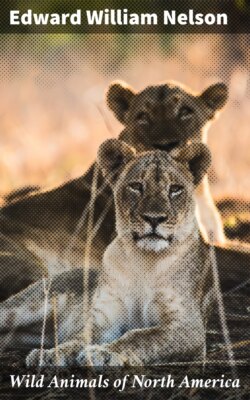Читать книгу Wild Animals of North America - Edward William Nelson - Страница 9
WANTON WASTE OF WILD LIFE
ОглавлениеPractically all other large game has alarmingly decreased, and its extermination has been partly stayed only by the recent enforcement of protective laws. It is quite true that the presence of wild buffalo, for instance, in any region occupied for farming and stock-raising purposes is incompatible with such use. Thus the extermination of the bison as a denizen of our western plains was inevitable. The destruction, however, of these noble game animals by millions for their hides only furnishes a notable example of the wanton wastefulness which has heretofore largely characterized the handling of our wild life.
A like disregard for the future has been shown in the pursuit of the sea mammals. The whaling and sealing industries are very ancient, extending back for a thousand years or more; but the greatest and most ruthless destruction of the whales and seals has come within the last century, especially through the use of steamships and bomb-guns. Without adequate international protection, there is grave danger that the most valuable of these sea mammals will be exterminated. The fur seal and the sea-elephant, once so abundant on the coast of southern California, are nearly or quite gone, and the sea otter of the North Pacific is dangerously near extinction.
Photograph by W. J. Stroud
ROCKY MOUNTAIN ELK
They can hold their own in the mountains in summer, but when the deep snows come they are compelled to go down into the valleys. Just before they leave the big bulls travel the mountains from one end to the other, driving old and young before them into the lower country. In case of a hard winter the elk are thin and weak, and then the dreaded wolf makes havoc among them, especially the little calves.
Photograph by W. J. Stroud
AN UNUSUAL ELK PICTURE
The recent great abundance of large land mammals in North America, both in individuals and species, is in striking contrast with their scarcity in South America, the difference evidently being due to the long isolation of the southern continent from other land-masses, whence it might have been restocked after the loss of a formerly existing fauna.
Photograph by Charles E. Johnson
THE MOOSE IS A POWERFUL SWIMMER
Photograph by F. O. Seabury
PART OF A HERD OF SIXTY MOUNTAIN SHEEP
They are fed hay and salt daily at the Denver and Rio Grande Railway station at Ouray, Colorado. This picture was taken at a distance of about 10 to 15 feet from the wild animals, which grow quite tame under such friendly ministrations.
From a drawing by Charles R. Knight
A MOOSE THAT LIVED IN NEW JERSEY IN PLEISTOCENE TIMES: CROVALCES
A primitive moose-like form, a nearly perfect skeleton of which was found in southern Jersey some years ago. In size and general proportions the animal was like a modern moose, but the nose was less developed, and the horns were decidedly different in character.
